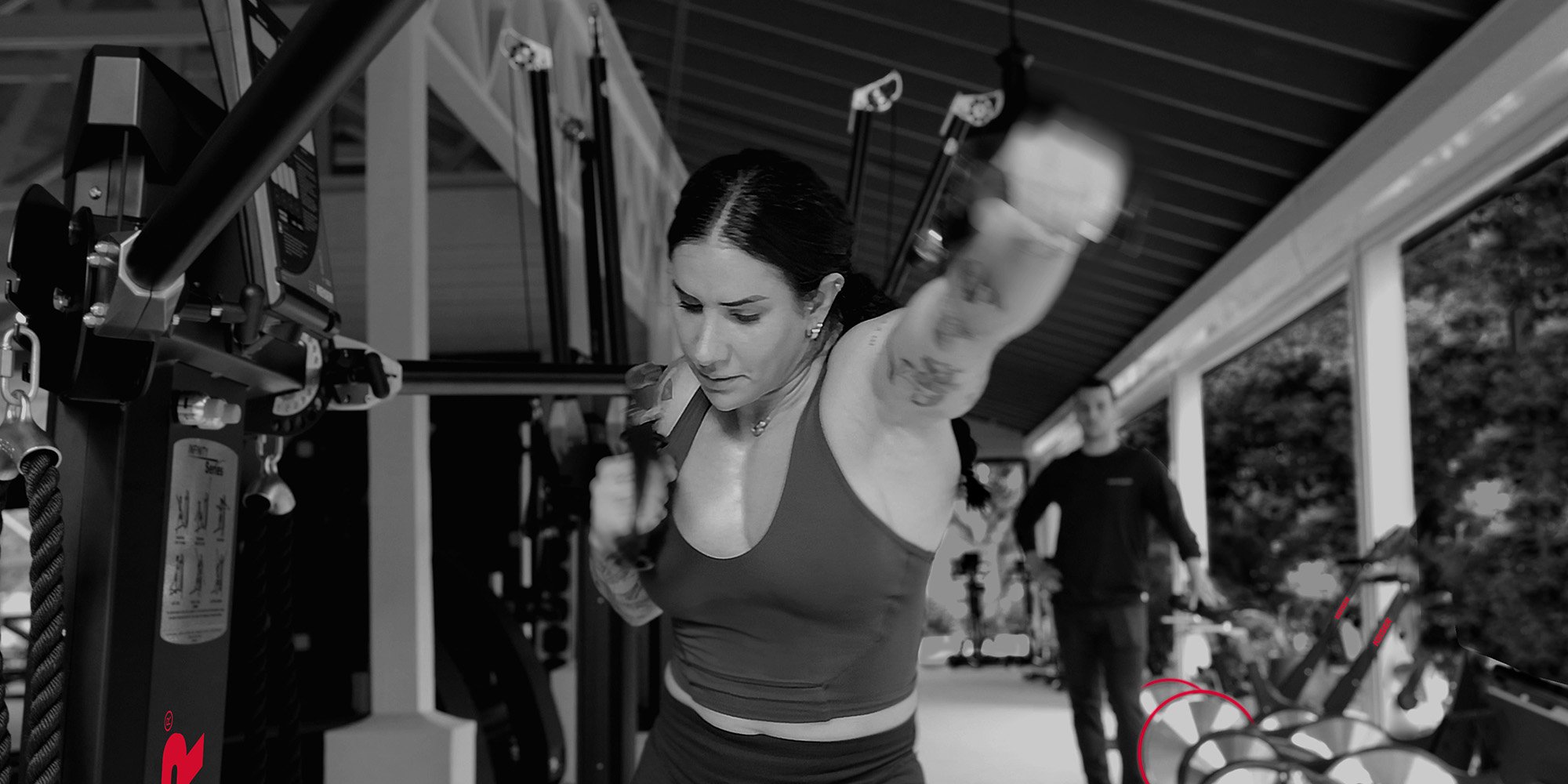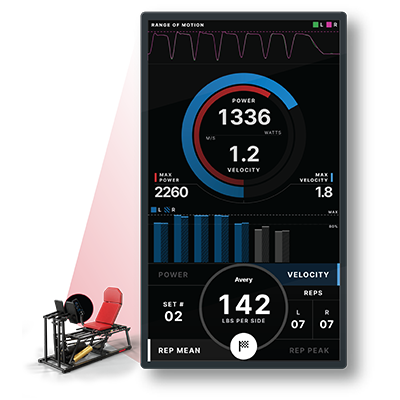4 min read

Unlocking Athletic Potential: How to Train Force, Velocity, and Power
A wide receiver explodes off the line, leaving defenders in the dust. A point guard weaves through traffic, effortlessly rising for a slam dunk. A pitcher unleashes a lightning-fastball, leaving the batter stunned. What do these athletes have in common? They’ve mastered the art of power.
Power, the product of force and velocity, is the driving force behind exceptional athletic performance. Understanding this fundamental principle is no longer a luxury—it’s a necessity for any athlete or coach serious about reaching their full potential.
Exploring the Relationship Between Force, Velocity, and Power
At Keiser, we’re relentlessly dedicated to pushing the boundaries of human performance. Our Keiser Education Series (K.E.S.) podcast brings together leading experts to share cutting-edge insights and practical strategies for optimizing athleticism.
In a recent episode, we dove deep into the world of force, velocity, and power with renowned strength and conditioning specialists Dr. Chris Morris, Dr. John Wagle and Keiser’s Todd Tuetken.
This blog post unpacks their invaluable insights, providing you with the knowledge to transform your training and unlock your true athletic potential.
BECOME A CERTIFIED TRAINER
Master Keiser's pneumatic technology & programming. Get Keiser certified.
Learn More
A History of Performance Training: From Ancient Greece to Modern Science
The pursuit of power is nothing new. Even ancient Greek athletes recognized the importance of force and velocity, using weighted objects called halteres during long jump competitions.

- Halteres from ancient Greece, used for the long jump in the Olympic Games. Currently located in the National Archaeological Museum in Athens (Portum at English Wikipedia, CC BY-SA 3.0, via Wikimedia Commons
Fast forward to the early 20th century, and A.V. Hill’s groundbreaking work laid the foundation for our modern understanding of the force-velocity relationship. Later, visionaries like Carmelo Bosco bridged the gap between theory and practice, applying these principles to develop innovative strength and conditioning programs.
Today, technology like GPS tracking and force plates allows us to measure and analyze athletic movement with unprecedented precision. This data empowers us to move beyond generic training protocols and develop highly individualized programs tailored to the specific demands of each sport and athlete.
Why Speed and Strength Are Only Part of the Equation
For years, athletic training has been plagued by oversimplified metrics and outdated assumptions. The experts on the K.E.S. podcast challenged these myths, emphasizing a more holistic approach to performance optimization.
Rethinking Traditional Metrics
- Football: Beyond the 40-Yard Dash: While speed is undoubtedly important in football, it’s not the be-all and end-all. Consider Los Angeles Rams wide receiver Cooper Kupp. He has achieved incredible success despite clocking a less-than-stellar 40-yard dash time. His dominance stems from exceptional reactive strength, agility, and route-running precision—qualities often overlooked in the pursuit of raw speed.
- Basketball: Beyond the Vertical Jump: A high vertical jump is impressive, but it doesn’t guarantee success on the court. Factors like body composition, lateral quickness, and injury prevention are equally crucial for basketball players. Overemphasizing jump height can lead to muscle imbalances and increase the risk of injury, hindering long-term development.
- The "Strong Enough" Debate: The concept of “strong enough” is relative and depends on the specific demands of the sport and position. Blindly chasing maximal strength can be counterproductive, especially in sports with complex technical and tactical components. As a coach, you must prioritize developing the optimal strength levels for performance without compromising technique, skill acquisition, or increasing injury risk.
DATA-DRIVEN PERFORMANCE
Elevate your game with advanced training solutions. Keiser: Built for athletic performance.
Learn More
Athlete Monitoring: The Key to Individualized Training
Gone are the days of one-size-fits-all training programs. Today, athlete monitoring is essential for understanding individual needs, tracking progress, and mitigating injury risk. By collecting and analyzing data on key metrics, you can tailor training programs for optimal results.
Sport-Specific Assessments
Here are some examples of valuable assessments for different sports:
- Football: GPS data provides insights into workload, speed, and acceleration profiles. Reactive strength index (RSI) measures explosiveness and the ability to change direction quickly.
- Baseball: Countermovement jump data helps assess lower body power, a crucial factor for both pitchers and hitters. The Yo-Yo IR1 test (Yo-Yo Intermittent Recovery Test) evaluates aerobic fitness, essential for pitchers who exert high levels of energy over long games. Joint-level assessments help identify potential areas of weakness or imbalance that could lead to injury.
- Basketball: Jump height data, combined with GPS data, helps monitor fatigue and training load. Body composition analysis ensures players maintain optimal weight and body fat percentages for performance and injury prevention.
The key to effective athlete monitoring lies in collaboration. Strength and conditioning coaches, athletic trainers, nutritionists, and sports psychologists must work together to interpret data, identify trends, and make informed decisions that support the athlete’s overall well-being and performance.
Force-Velocity Profiling: A Valuable Tool with Limitations
Force-velocity profiling is a valuable concept that helps visualize the relationship between force and velocity during different movements. By understanding an athlete’s force-velocity profile, coaches can identify strengths and weaknesses and tailor training programs accordingly.
However, it’s crucial to remember that the ideal force-velocity profile is not one-size-fits-all. It varies based on the sport, position, and individual athlete. While the force-velocity profile provides valuable insights, it should not be used as the sole predictor of performance, especially for complex movements in dynamic sporting environments.
Load-Velocity Profiling: A Practical Approach
Load-velocity profiling, on the other hand, offers a more practical approach for prescribing training loads in the weight room. By tracking the velocity of specific lifts at different loads, you can monitor athlete readiness, adjust training intensity, and optimize performance gains.
Training for Life: Sustainability and Enjoyment
As athletes mature, their training goals often shift from maximizing performance to prioritizing longevity and overall well-being. Maintaining strength, mobility, and aerobic capacity becomes crucial for long-term health and quality of life.
Instead of chasing personal bests and pushing their bodies to the limit, experienced athletes should focus on moving well, listening to their bodies, and finding enjoyment in the process. This approach promotes consistency, reduces the risk of injury, and allows individuals to enjoy the benefits of physical activity for years to come.

Conclusion
Unlocking your athletic potential requires a multifaceted approach that goes beyond simply training harder. By understanding the intricate relationship between force, velocity, and power, and embracing individualized training methodologies, you can achieve sustainable performance gains and reach new heights in your athletic pursuits.
To dive deeper into the fascinating world of force, velocity, and power in sports performance, be sure to listen to the full K.E.S. podcast episode featuring Dr. Chris Morris, Dr. John Wagle, and Keiser’s Todd Tuetken. And explore Keiser’s range of innovative performance training equipment designed to help you maximize your athletic potential.

Subscribe to Keiser's FREE publications
Receive tips, articles, and tools to improve human performance via email.